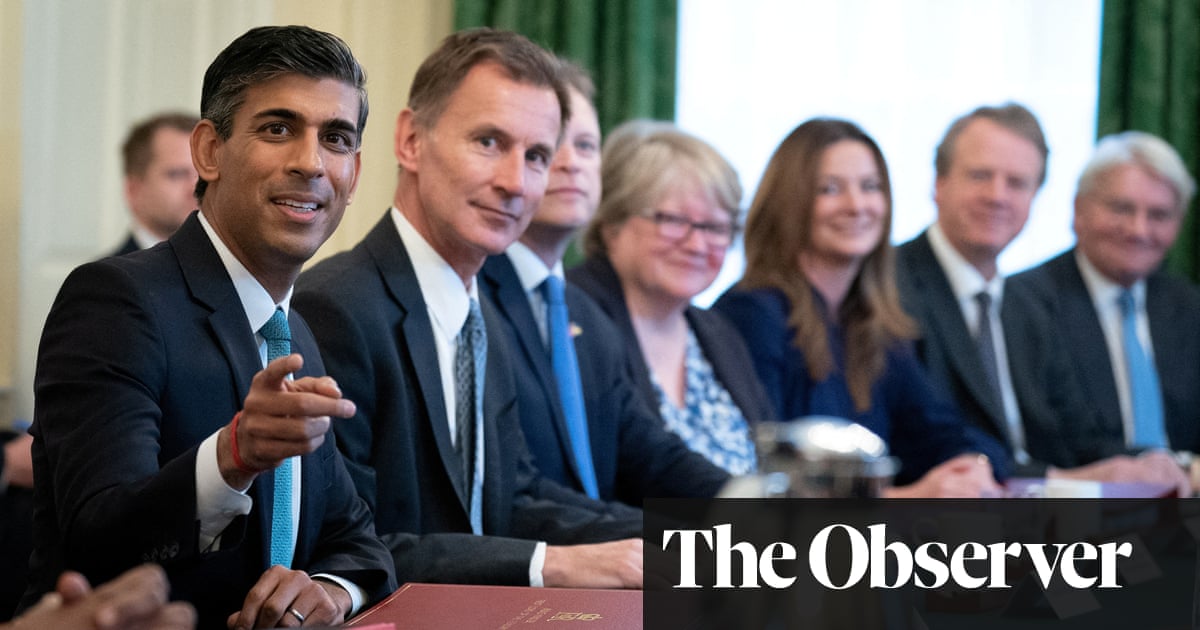
All eyes at the Treasury this week will be on estimates of economic growth in the final three months of 2023. A contraction in gross domestic product (GDP) in the fourth quarter would spell embarrassment for the government and disaster for Rishi Sunak.
The second of the prime minister’s five pledges was to have the economy growing by the end of the year. Instead, it is widely expected that the Office for National Statistics (ONS) assessment of fourth-quarter activity will show that the economy contracted by 0.1%, after also shrinking by 0.1% in the third quarter (revised from an estimate of no growth). That would mean the UK was in a recession during the second half of 2023, albeit a shallow one. An economy is considered to be in recession after two consecutive quarters of contraction.
The shallowness of the downturn is unlikely to stop Labour from ramping up its criticism of the government’s economic prowess. While much of the damage dates from the Liz Truss premiership and her chancellor Kwasi Kwarteng’s kamikaze budget, Jeremy Hunt promised that his steady hand on the tiller would provide the stability needed for companies to begin investing again.
Yet Thursday’s GDP figures are expected to show that UK manufacturing was in recession all year and business investment negative, undermining Hunt’s claims. Corporate insolvencies are rising, with construction, retail and hospitality the worst-affected sectors.
It remains touch and go whether the MPC will be able to reduce interest rates as soon as May, as we and most investors expect
Samuel Tombs, Pantheon
Nevertheless, Gabriella Willis, a UK economist at Santander, says Hunt can look forward to better times. Not only is it possible the recession may later be re-evaluated by the ONS, with contraction turning into growth, but 2024 generally is forecast to be a better year.
“The UK recession, if confirmed, looks set to be as short and shallow as they come. We see reasons to be a little more upbeat on 2024, with surveys for January suggesting 2024 started on a better footing, shrugging off the year-end lethargy,” she said.
The Bank of England will be focusing on how fast pay is rising. Officials are concerned that labour market data due on Tuesday will show that despite the economic gloom, wages continued to rise in the dying months of 2023, which could mean inflation rising again later this year, limiting the scope for interest rate cuts.
In a busy week for UK economic data, the ONS will also publish its inflation figures for January on Wednesday. Analysts say the signals are likely to be mixed, giving the Bank’s monetary policy committee (MPC) a headache when it meets next month. Wages are expected to have increased between November and December by about 0.4%, which for a single month represents a strong boost to disposable incomes. The annual figure for the average wage rise could remain at 6.5% – the same as it was in November, and well ahead of inflation.
Catherine Mann, a former investment bank economist who started her career at the US Federal Reserve and is a member of the MPC, said in a recent speech that she feared companies were planning to put up prices this year even though their costs had fallen sharply.
A few days after Mann’s speech, Sarah Breeden, a Bank insider who was promoted to the MPC last year, said she wanted to see wages growth falling before she would consider slicing back the cost of borrowing from its current level of 5.25%.
Samuel Tombs, chief UK economist at Pantheon Macroeconomics, said the labour market was weakening, but not at the pace needed for the central bank to cut interest rates imminently. “It remains touch and go whether the MPC will be able to reduce [interest rates] as soon as May, as we and most investors expect,” he said.
Inflation is proving a head-scratcher for all central banks after steep falls last autumn were reversed in the run-up to Christmas.
Financial markets expect the UK consumer prices index (CPI) to rise again in January to 4.2%, from 4% in December and 3.9% in November.
However, the recent increases are expected to be reversed during the spring, with CPI possibly falling below the Bank’s 2% target by June.
This prediction has encouraged financial markets to bet that a cut in the interest rate is coming sooner rather than later.
Bank governor Andrew Bailey is worried that speculation about early interest rate cuts has already brought down mortgage rates and that an economic rebound, while modest, is in train. It means the path to much lower interest rates, whenever it begins, could be long and winding.












